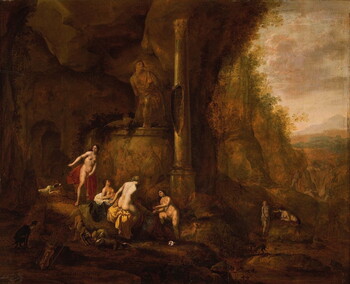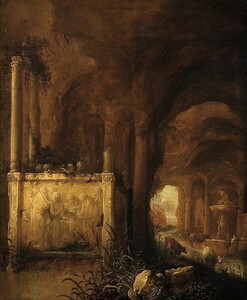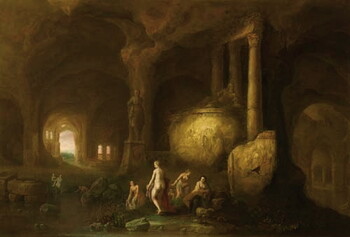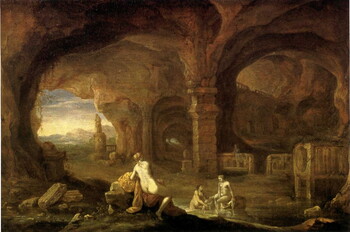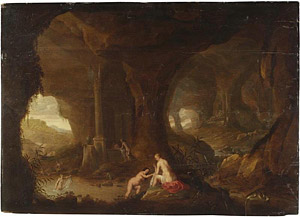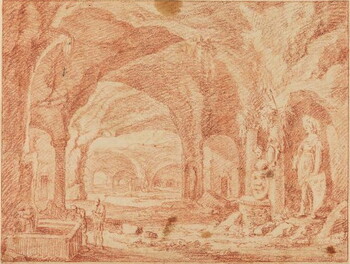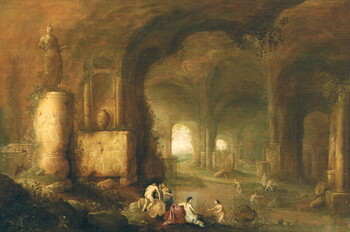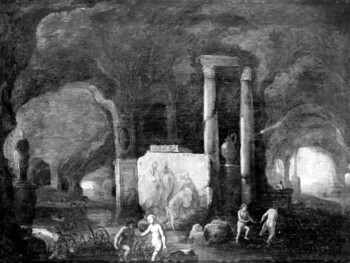7.300 €
Women bathing in a mysterious cavern surrounded by Roman monuments
Oil on panel : 41,9 X 54,7 cm
Signed and dated lower middle on the rock against which the left woman is leaning
“ACuylenborch / F. 1643”
Frame : 61,3 X 73,3 cm
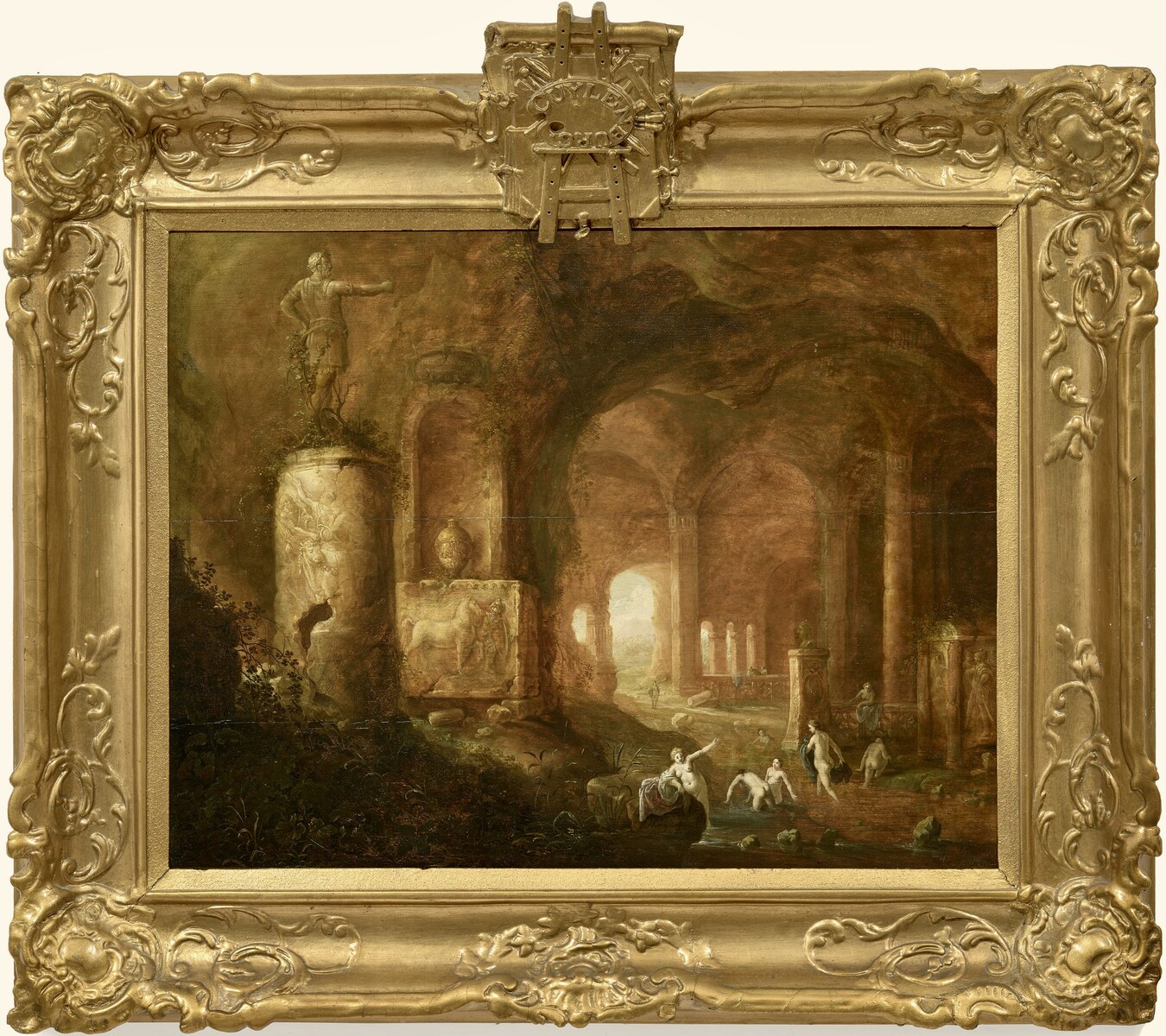
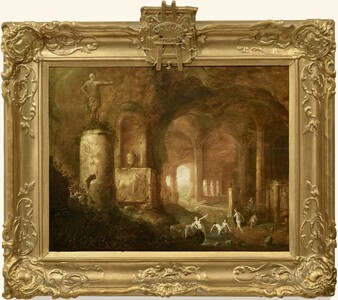
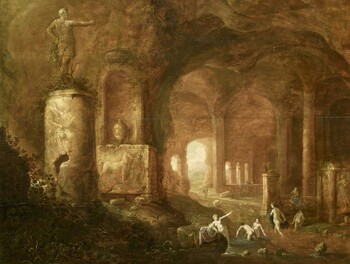
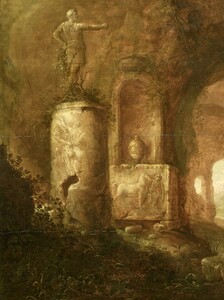
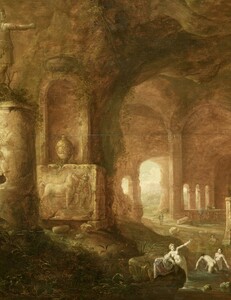
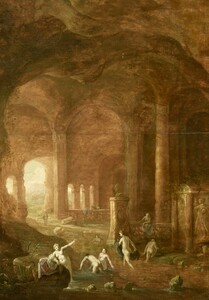
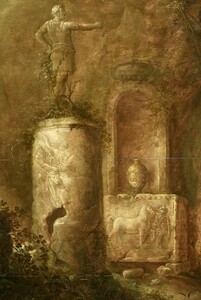
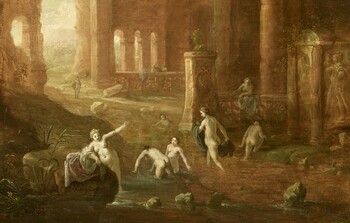
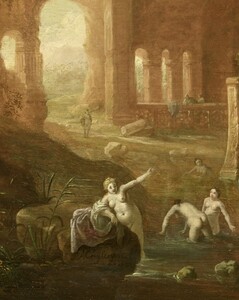
In short
Abraham van Cuylenborch is not known to have ever travelled to Italy.
In his native Utrecht he re-created his own ancient Roman world: he specialised in representations of nude women, often Diana and her nymphs, bathing in small lakes set in caverns filled with remains of ancient Roman monuments. Strangely enough this subject was typical of
several other Dutch painters during the first half of the 17th century, who also lived in Utrecht or in Amsterdam.
About Abraham van Cuylenborch
Dutch painter
Utrecht 1620 – 1658 Utrecht
His last name is sometimes spelt Cuylenborgh or Cuylenburgh.
Painter of Arcadian landscapes and of grotto interiors.
Van Cuylenborch remained active in his native Utrecht all his life.
He joined the local Painter’s Guild in 1639 and married here in 1641.
It is not known whom van Cuylenborch studied under, but he was strongly influenced by:
- Cornelis van Poelenburch (15954/95 -1667). A contemporary collector, Aert Teggers of Dordrecht, described van Cuylenborch as a pupil of him, but during those years that our painter could have studied painting in Utrecht van Poelenburch lived in England (between1637 and 1641).
- Dirck van der Lisse (1607 – 1669), who was probably a pupil of van Poelenburch.
- Charles (or Carel) de Hooch (1600/1606 – 1638).
About grotto scenes
During the 17th century Italy's landscapes, antique culture and monuments, warm Southern light and lively population formed a source of inspiration for numerous Northern artists, especially for Dutch and Flemish painters.
Several Dutch painters, such as Charles and David de Hooch, Abraham van Cuylenborch, Rombout van Troyen or Petrus van Hattich specialised in so-called grotto interiors with antique monuments.
Others like Cornelis van Poelenburch, Dirck Stoop, Jacob Muller and Willem van Bemmel regularly chose these mysterious, somewhat melodramatic surroundings for their paintings.
Of other painters, for example Jan Asselijn, Jan Griffier I and II, or Alexander Havelaar just one or two cavern interiors are known.
The figures within the cavern scenes were either mythological (Diana and her nymphs) or contemporary figures (visitors, shepherds).
The inventor of this new subject must have been Cornelis van Poelenburch, who had returned from a stay in Italy (Rome: 1617 – 1625 and Florence: circa 1625 – 1626) to his native Utrecht in 1627.
Why did Dutch painters choose, from all possible Italian places and subjects, caves as a subject? Italy is not particularly known for its caves filled with Roman ruins and tombs.
But then one must think of ancient ruins discovered between the late 15th century and the start 17th century during “archaeological” excavations, such as:
- the remains of the Domus Aurea of Nero on the Palatine Hill in Rome,
- the huge temple of Fortuna Primigenia under the town centre of Palestrina,
- the Nymphaeum at Hadrian’s Villa in Tivoli,
- the catacombs in and just outside Rome.
Another reason explaining the popularity of paintings representing grotto interiors could be that in 16th and 17th century Italian shepherd plays set in Arcadia, nymphs, satyrs and even shepherds lived in them. The final of the in 1589 published and all over Europe immensely popular “Il pastor fido” from Giovanni Battista Guarini (1538 – 1612) is also set in a cavity.
These cavern interiors are all about vanity and decay. The scenery is not just decorative and beautiful, it is meant to inspire its viewers to wonder about deeper religious and philosophical ideas, to meditate about death and resurrection, about the ephemeral character of life.
Typical is the ruined state of the monuments. Columns, sarcophagi, sculptures stand under poetic, almost magic grotto vaults, strangely lit by light reflecting on water of a spring, an underground lake or river bed.
About Arcadia
Arcadia refers to a vision of pastoralism and harmony with nature. It is derived from the Greek province of the same name, dating from antiquity. The province's mountainous topography and sparse population of shepherds later caused the word ‘Arcadia’ to develop into a poetic byword for an idyllic vision of an unspoiled, Mediterranean wilderness, uncorrupted by civilization. It was regarded as unattainable or as a lost.
Arcadia became an idealised phantasy dreamland in poetry. Best known are:
- the popular pastoral tragicomedy “il pastor fido” by Battista Guarini (1590);
- the translation in Dutch by Karel van Mander of the “Bucolics” of the Roman poet Virgil (1597);
- the famous play “Granida” by Pieter Cornelisz. Hooft (1605).
In painting Arcadian scenes are characterised by an Italianate landscape (hills bathing in a warm sunlight) populated with nude or scarcely dressed figures.
Why should you buy this painting?
Because the sheer poetry of this cavern interior, set in a rather Baroque frame, is a strange, but beautiful hymn to Roman culture and to female beauty.
Can you imagine that van Cuylenborch painted this iconic view at the age of twenty-three? He recomposed this composition until his premature death at the age of thirty-eight.
Comparative paintings
Click photos for more details

